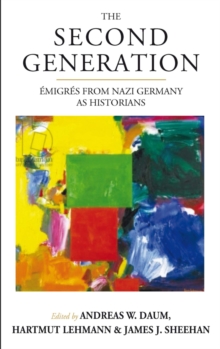
LOCAL LIVES, PARALLEL HISTORIES SGH C : Villagers and Everyday Life in the Divided Germany EPUB
by Marcel Thomas
Part of the Studies in German History series
EPUB
Description
The division of Germany separated a nation, divided communities, and inevitably shaped the life histories of those growing up in the socialist dictatorship of the East and the liberal democracy of the West.
This peculiarly German experience of the Cold War is usually viewed through the lens of divided Berlin or other border communities.
What has been much less explored, however, is what division meant to the millions of Germans in the East and West who lived far awayfrom the Wall and the centres of political power.
This volume is the first comparative study to examine how villagers in both Germanies dealt with the imposition of two very different systems in their everyday lives.
Focusing on two villages, Neukirch (Lausitz) in Saxony and Ebersbach an der Fils inBaden-Württemberg, it explores how local residents experienced and navigated social change in their localities in the postwar era. Based on a wide range of archival sources as well as oral history interviews, the work argues that there are parallel histories of responses to social change among villagers in postwar Germany.
Despite the different social, political, and economic developments, the residents of both localities desired rural modernisation, lamented the loss of 'community', and became politically active to control the transformation of their localities.
The work thereby offers a bottom-up history of dividedGermany which shows how individuals on both sides of the Wall gave local meaning to large-scale processes of change.
Information
-
Download - Immediately Available
- Format:EPUB
- Pages:320 pages
- Publisher:OUP Oxford
- Publication Date:23/04/2020
- Category:
- ISBN:9780192598257
Other Formats
- PDF from £69.66
Information
-
Download - Immediately Available
- Format:EPUB
- Pages:320 pages
- Publisher:OUP Oxford
- Publication Date:23/04/2020
- Category:
- ISBN:9780192598257










